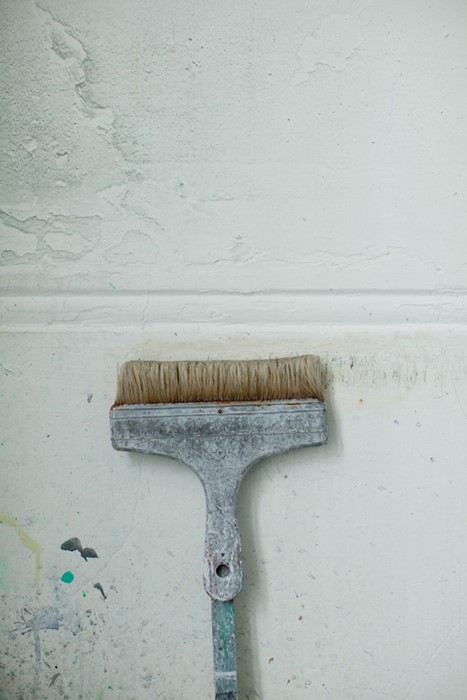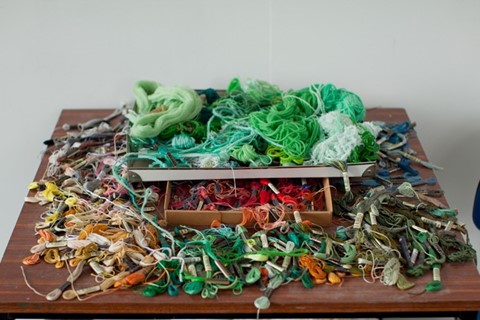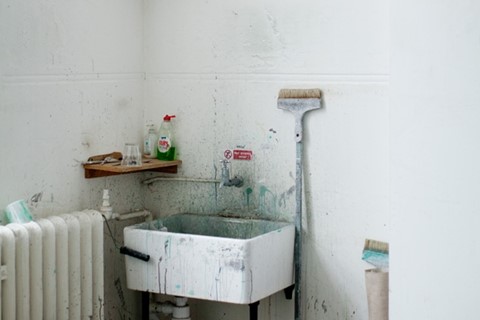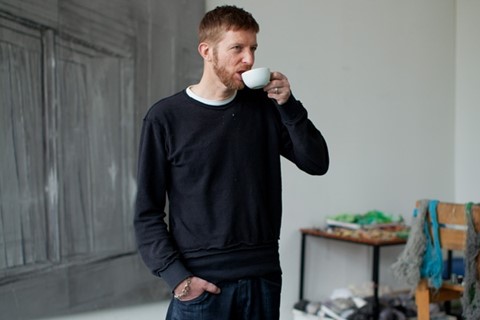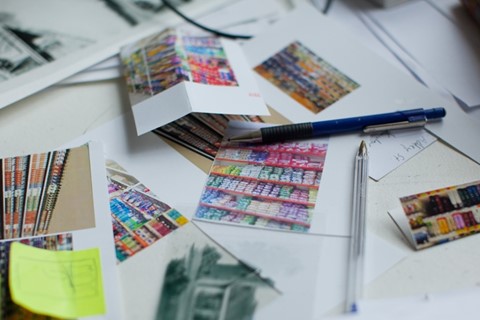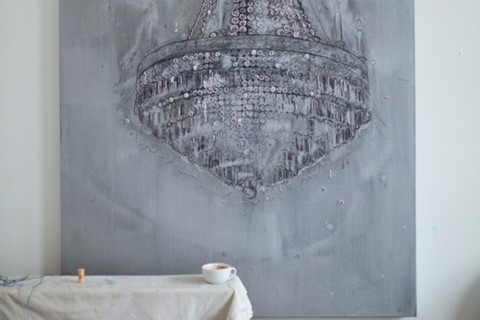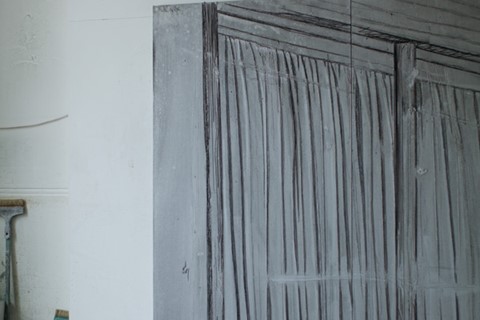Assisting Martin Margiela in the mid 1980s and graduating with an MA in Fine Art from Goldsmiths during the late 1990s, Michael Raedecker’s career as an artist certainly got off to a roaring start when Charles Saatchi bought a sizeable chunk of his
Graduating with an MA in Fine Art from Goldsmiths during the late 1990s, Michael Raedecker’s career as an artist certainly got off to a roaring start when Charles Saatchi bought a sizeable chunk of his final degree show. Since then, Raedecker has spent the last two decades perfecting the unique methods for which he has become known. His ability to create haunting and absorbing works that blend both needlework craft and brush stroke so beautifully, culminated in a Turner Prize nomination in the year 2000.
During the mid 1980s, you initially trained as a fashion designer at the distinguished Gerrit Rietveld Academie in Amsterdam. What caused the shift towards your current career as an artist?
For many years, I was sure that I’d end up working in the fashion industry. Whilst I was still just an apprentice, I travelled to Paris to work for various different people – one of the most notable being Martin Margiela. The brand was still in its infancy back then, with a very small number of employees. I realise now, that I was very lucky – the whole experience of working alongside him was very impressive and somewhat life changing. After assisting Margiela with the catwalk shows, I saw how important it was to work as part of a team, and how as a designer it’s essential for you to be able to delegate parts of the creative process. I felt that working within the constraints of clothing I could never say everything I wanted to say, and would always have to work alongside other people, when my ideal was to work solo. I still went back to Amsterdam to finish my BA, but in the end, I started to drift away from the idea of a lifetime working as a fashion designer.
"After assisting Margiela, I saw how important it was to work as part of a team, and how as a designer it’s essential for you to be able to delegate parts of the creative process"
The concept of combining paint and embroidery thread is unusual. Do people often presume it’s as a result of your former training?
People do always tend to automatically assume there’s a connection – they make the tenuous link between the thread in my work and my background in fashion, but it’s not like that. I think when I started to make the transition from fashion to art I felt like an intruder. It was as though I was sneaking through the back door of the art world. There were so many incredible artists who had existed before me, the only way to understand what it really meant to be an artist, was to spend time down at the library, researching those who had gone before me. The quest for information was pretty labour intensive and lengthy (before the internet existed). Gradually, I became much more focussed, and decided that I wanted to fight the commonly held ideas of fine art, I wanted to kick against it and make something unholy. Combining a folksy, feminine craft with traditional painting was such a huge discovery for me, controversial and rebellious - it was definitely my "eureka" moment.
The first time I saw one of your paintings was in 2002 at the Royal Academy’s Galleries Show. I felt inextricably drawn to this eerie glow emanating from a single story bungalow. Although the subject matter of your work has diversified a lot since then, the viewer still feels simultaneously connected and disconnected. Was this your intention?
Although I grew up in the Netherlands during the 1970s, American television still played a huge part in my childhood. The Brady Bunch was one of my particular favourites. I just loved the idea of these neat, suburban homes with their manicured lawns and neat driveways. Sure, I have an appreciation of modernist architecture, but the houses in my paintings are purely props, they punctuate the otherwise empty landscapes. The houses formed a part of my cinematic ideas of composition – the way the camera moves into the house and pans back out again, encompassing fluid movement, like a film strip. We have all indirectly experienced so much from watching films and television, we don’t need a lot of storytelling anymore because we tend to fill in the gaps ourselves and my work acknowledges that. I am the author, not a dictator. The fact that the viewer has the space to walk around, and then decide for themselves how the story ends is all part of the appeal.
Michael Raedecker, Volume, showing at Hauser & Wirth, closes today.
Text by Leanne Cloudsdale
Leanne Cloudsdale is a London based writer. She has previously contributed to titles including AnOther, Arena Homme Plus, i-D and Inventory.
